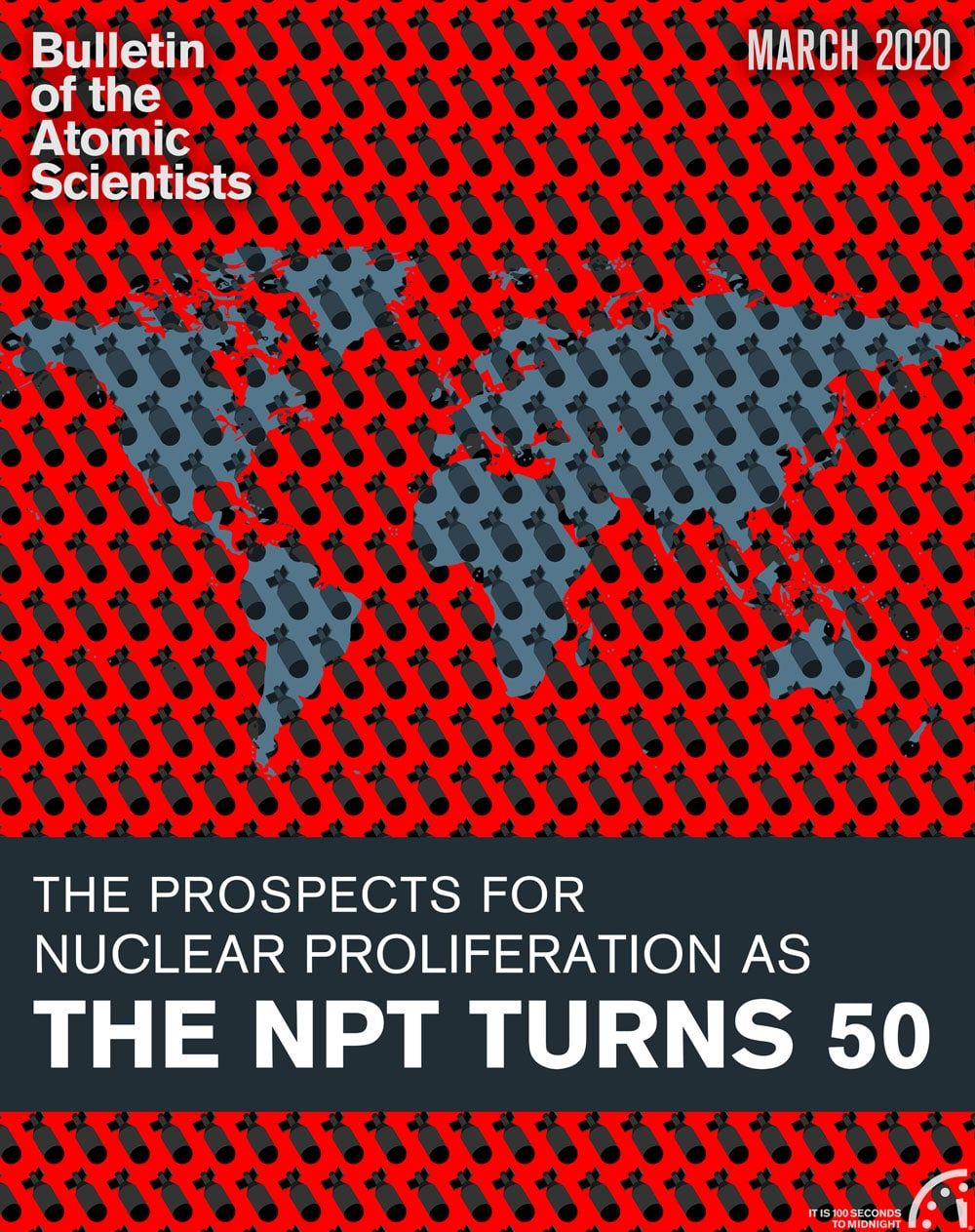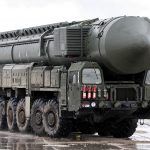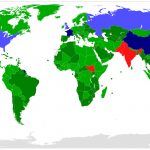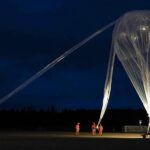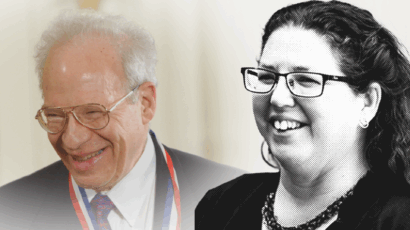Can NATO evolve into a Climate Alliance Treaty Organization in the Middle East?
By Amar Causevic, Ibrahim Al-Marashi | March 1, 2020
Can NATO evolve into a Climate Alliance Treaty Organization in the Middle East?
By Amar Causevic, Ibrahim Al-Marashi | March 1, 2020
The Trump administration augured in the new decade in the Middle East with an early morning airstrike on General Qassem Soleimani, head of Iran’s Islamic Revolutionary Guard Corps Quds Force (Al-Marashi 2020). In a speech justifying the attack, Trump urged NATO to expand its operations in the region and coined the term “NATOME,” or NATO Middle East, to sell the alliance on the idea (Associated Press 2020). His suggestion, however, was met with incredulity by members of NATO: Trump’s actions had jeopardized the organization’s mission in Iraq. Indeed, Iraq after this wholesale breach of its sovereignty, the Iraqi Parliament demanded that American troops withdraw from Iraq—and alliance members such as Germany began withdrawing its troops for security concerns (Luce and Bozorgmehr 2020).
The situation was deeply ironic, as the attack came at a time when NATO’s influence in Iraq should increase beyond its existing mission—to train the Iraqi military to combat Islamic State remnants—and deal with a more pernicious security threat: climate change. If one were to introduce a new acronym to describe NATO’s role in the region, it should be CATO, or “Climate Alliance Treaty Organization,” to describe a new role for the organization: dealing with the security impacts of potential tipping points and developing a sustained policy response (Al-Marashi 2019). Unfortunately, Trump’s actions may have jeopardized NATO’s potential to serve this role in the future, which now hinges on the outcome of the 2020 elections.
Why there’s need for a new, climate-related role by NATO
Regional tensions, both within Middle Eastern states and internationally, are affected by climate fluctuations. For example, demonstrations erupted across Lebanon in October 2019, in protest of the Lebanese state’s inability to adequately respond to the wildfires that ravaged the nation. Aided by strong winds and unseasonably high temperatures, the country’s October wildfires ravaged the Mount Lebanon mountain range—a potent symbol of the leadership’s failures. To make matters worse, Lebanon’s three firefighting aircraft remained grounded due to a lack of maintenance, adding to the sense of the government’s waning infrastructure. (And along these same lines, the protests were also partly a response to the decades-long failure of the country’s leadership to provide reliable governance and services.)
Ultimately, neighboring countries, including Greece, deployed aircraft to assist Lebanon (Azhari 2019)—demonstrating how a NATO member, Greece, can provide assistance to a Middle Eastern country and deal with a pressing item on the security agenda. With this experience in mind, it is clear that it is incumbent upon NATO to develop the political will and institutional capacity to deal with climate-change tipping points both within the alliance and within the area most vulnerable to its southern flank: the Middle East.
The so-called tipping point problem, as the University of Pennsylvania’s Perry World House demonstrates, is a concept borrowed from physics to examine how a small quantitative change can triggers larger, non-linear effects. Social tipping points can shift a community from stability to instability, from a state of peace to one of violence, from settled lifestyles to sudden migration (Perry World House 2019). As the Perry House authors state: “As anyone who takes a quick scan at newspaper headlines can see, climate change has the potential to trigger major social transformations.” Indeed, the term “tipping point” has entered into the media lexicon, as can be seen in recent headlines such as The Guardian’s “Amazon Rainforest Close to Irreversible ‘Tipping Point’” (Phillips 2019) and Reuters’ “Think the Heatwave Was Bad? Climate Already Hitting Key Tipping Points” (Green 2019).
But while the passing of a tipping point can lead to substantial, unpredictable, disruptions, it is not always easy to monitor the precise status of a given tipping point at a given time; often, all we really know is that surpassing it can trigger or increase the risk in ecosystems over vast distances—such as the effects of the monsoons of South Asia on the Amazon rainforest (Boers et al. 2017; Steffen et al. 2018; Lenton et al. 2008; Lenton and Williams 2013). Similarly, human-induced stress on tipping points can lead to unexpected systemic changes that are difficult, or even impossible, to reverse. And a tipping point in one ecosystem can trigger or increase the risk of a cascade of tipping points in other ecosystems (Rocha, Peterson, and Biggs 2015). For example, the melting of ice caps of the North and South Poles can have multiple inter-related and ever-increasing effects: Because ice reflect much of the sun’s radiation back into space, the loss of that sea-ice means that blue waters of the ocean’s surface will now absorb more of the sun’s energy, contributing further to the warming of the planet and a change in the ocean’s bio-geochemistry (Balmaseda, Trenberth, and Källén 2013).
During the Anthropocene—the geological era in which we live, where human activity has become the dominant force influencing the climate—the potential cascade of climate tipping points serves as a non-traditional, natural, transnational threat-multiplier, undermining the security of modern societies (Causevic 2017; Dalby 2014; Crutzen 2002). Until 1945, states did not factor in environmental threats because they were not thought to be capable of large-scale impacts on planetary geology and biology (Wapner 2010; Steffen et al. 2011; Burke et al. 2016). Consequently, new security dilemmas in the Anthropocene will differ from those faced by modern states and societies before the Cold War—as well as the policy and institutional frameworks developed to provide security for these states, such as NATO.
A timeline of NATO concern about the environment
NATO has been concerned with environmental security since the late 1960s, when it established the Committee on the Challenges of Modern Society—a scientific research body focusing on defense-related environmental issues. In 2006, this committee was absorbed into the Science for Peace and Security Program, where its mandate was to promote dialogue and practical cooperation between NATO member states and partner nations based on scientific research, technological innovation, and the exchange of knowledge, in order to protect the environment from the detrimental impact of military activities. To better achieve this latter goal, NATO formed the Environmental Protection Working Group in the early 2000s, to mitigate the negative environmental impact of military operations. At the same it, also established the Specialist Team on Energy Efficiency and Environmental Protection, which integrates environmental protection and energy efficiency regulations in its military hardware, equipment, and machinery. Along these lines, the NATO Research Vessel “Alliance” conducted research in the Atlantic in 2008 as part of the Marine Mammal Risk Mitigation Project, directed at reducing the harmful effects of naval ships on whales and dolphins (NATO 2008).
But the first time the alliance acknowledged that climate change is a non-traditional threat multiplier, was in 2010, when NATO established the Emerging Security Challenges Division to monitor and deal with a growing range of non-traditional risks—including climate change, energy security, terrorism, cyber defense, and the proliferation of weapons of mass destruction (NATO 2010b).
By 2013, NATO was integrating climate change deeply into its operations, adopting the so-called Green Defense framework, which “seeks to increase the Organization’s operational effectiveness through changes in the use of energy, while saving resources and enhancing environmental sustainability” (International Institute for Sustainable Development 2014). Moreover, in 2015 NATO’s Parliamentary Assembly adopted a resolution on “Climate Change and International Security,” which officially acknowledged the role of humankind in greenhouse gas emissions, defined its negative impact on ecosystems, and stressed the urgent need for the alliance to proactively deal with the problem (NATO Parliamentary Assembly 2015).
These were more than just words on paper; NATO demonstrated its commitment to environmental security in places such as Central Asia and the Balkans. To highlight just a few examples, the organization has supported integrated water resources management for a wetlands restoration project in the Aral Sea basin of Kazakhstan and Uzbekistan (NATO 2010a). And in the Balkans, 21 NATO member states provided humanitarian aid, helicopters, rescue teams, medicine, blankets, and tents across Bosnia-Herzegovina during the devastating floods that country experienced in 2014, while the alliance’s troops on the ground worked in tandem with Bosnian civil and military organizations. North Macedonia, together with NATO, started implementing the Next-Generation Incident Command System, as well as Science for Peace and Security Program software to improve real-time situational awareness to better deal with climate change-induced disasters such as landslides caused by flooding (NATO 2019). Such operations set a precedent for NATO to operate as a “CATO” for future operations in the Middle East—assuming, of course, that these states request NATO’s aid and do not view its presence as an infringement on their national sovereignty.
CATO in Iraq
NATO has existing and potential partnerships in the Middle East. In the mid-1990s, NATO launched the “Mediterranean Dialogue,” a forum of cooperation between the alliance and Jordan, Egypt, Israel, Morocco, Tunisia, Algeria, and Mauretania (Said 2004). The Istanbul Cooperation Initiative established a political dialogue and defense reform in Bahrain, Qatar, Kuwait, and the United Arab Emirates in 2004 (Rynning 2007). And at the Wales Summit in 2014, the alliance agreed to expand the capacities of the NATO Response Force—a multinational force made up of land, air, and maritime units—to conduct disaster relief and protection critical infrastructure, including in the Middle East.
The timing could not have been better. Protests emerged in Iraq that same month, concerned with jobs and corruption, as well as environmental matters such as reliable water—just as in Lebanon. (NATO did not participate in the 2003 invasion of Iraq, but played a significant role in post-invasion efforts to stabilize the country.) However, the alliance faces enormous challenges in order to assist Iraq: It must alleviate the Iraqi government’s concerns about national sovereignty, and integrate climate security into its mandate, at the same time that climate risks become an ever-greater danger in Iraq and exacerbate its insecurity. The overall increase in temperature has depleted freshwater supplies, affecting food production, and allowing saltwater to intrude into the Tigris and Euphrates river delta.
Meanwhile, hydropower dams in Turkey and Syria have reduced Iraq’s freshwater levels. NATO member state Turkey—home to the headwaters of the Tigris and Euphrates rivers—has been building more than 20 dams, that together will reduce access to water for seven million Iraqis in 36 cities across the country (Hassan, Born, and Nordqvist 2018). Just one of these dams—the Ilisu Dam in Turkey—would hold back 10.4 billion cubic meters of water, potentially causing destructive water shortages downstream in Iraq, and raising tensions between Ankara and Baghdad (Karadeniz and Aboulenein 2018). Since the 1990s, the flow of water in Iraq’s rivers has decreased by 40 percent, resulting in food insecurity for about five percent of the country’s population (Hassan, Born, and Nordqvist 2018). Economic losses due to water scarcity accounted for about three percent of the diminishment in Iraq’s gross domestic product in 2017, equivalent to $5.7 billion (World Bank 2017). And due to rising temperatures, the average rainfall is projected by 2050 to decrease by a further nine percent, leading to further water shortages and a decline in future livestock production (World Bank 2017).
As if these problems were not enough, the Middle East is facing another climatic tipping point, in the form of sea-level rise. Because of rising sea-levels, seawater has slowly entered into Basra’s canals and streams, contaminating drinking water supplies and turning once-fertile land into desert. Salt water has already penetrated 300 kilometers upstream, through the Shatt al-Arab waterway, killing crops, livestock, and fish (Benhaida 2018). In 2018 and 2019, protests emerged in Basra over water scarcity, leading to clashes with government security forces that left many injured and several dead. This situation is only expected to get worse with the future increase in sea-level.
Moreover, increases in average temperature particularly affect low-income families, who, cannot afford the diesel generators needed to power fans and air conditioners. (Electricity shortages mean that they cannot rely on the national power grid to supply their energy needs, and so must purchase diesel generators—if they can.) (Hall 2016). By 2100 there is a possibility that Baghdad will become uninhabitable for most of its population (Lelieveld et al., 2016).
These factors, combined with weak and oppressive governance, has led to an increase in local support for non-state actors, ranging from the Islamic State to Shi’a militias. About 25 percent of the country’s population is dependent on agriculture for their livelihoods, and the diminishment of this resource will provide recruitment for militant groups, especially among neglected and marginalized communities (Hassan, Born, and Nordqvist 2018). The Islamic State also set a precedent for weaponizing water, providing it to local populations, while depriving the flow to areas under government control (Von Lossow 2016).
Exacerbating climate change will erode the already limited capacity of the central government. Iraq’s Ministry of Water Resources has been hampered by lack of financial resources and does not have the capacity to implement its Strategy for Land and Water Resources, which aims to improve irrigation practices and overall water management; indeed, it experienced a massive budget cut between the years 2013 and 2017, from $1.7 billion to $50 million (Von Lossow 2018).
Internal or external population migrations will result due to this combination of a lack of freshwater, prolonged periods of drought, intensified dust and sand storms, and an increase in the length and intensity of heatwaves, all occurring while the government is unable to provide assistance to its citizens. Iraq had serious droughts and crop failures in 2007, 2008, and 2009, causing almost 100,000 people to leave rural areas and look for sanctuary in the cities. This mass internal migration of climate refugees increases the potential for conflict between host and migrant communities over livelihoods, jobs. and necessary resources (Hassan, Born, and Nordqvist 2018; Von Lossow 2018).
CATO’s future
In the face of ongoing protests since October 2019 and Trump’s policy decisions, the Iraqi government is primarily concerned with its short-term political survival and lacks the institutional capacity to deal with longer-term environmental concerns. To make matters worse, NATO’s most powerful member state is led by a president, Donald Trump, who denies the very existence of climate change, despite the wealth of hard scientific evidence to the contrary (Causevic, Bezci, and Borroz 2018). Trump demanded that the alliance members increase military spending, which would only lead to a security dilemma for Russia and increases in its spending. Diverting such spending to mitigating climate risks in the Middle East would not only be more productive, but such proactive measures would also allay fears in Moscow.
Tensions within NATO would need to be overcome, in order to incorporate budding climate security initiatives developed into NATO’s strategic planning. But precedents in the Balkans and Central Asia demonstrate that NATO member states have the technical and logistical capacity to deal with climate change—for example by deploying a body like the NATO Response Force to repair the water purification infrastructure in Basra.
Reliable partners in the region could develop a joint strategy to mitigate climate security risks; the real problem is one of political will. But we do have an admirable precedent here: If the Cold War led to the formation of NATO, this “Hot War” should encourage the alliance to reinvent itself as CATO, prioritizing its efforts to mitigate the effects of climate change.
Funding
This research received no specific grant from any funding agency in the public, commercial, or not-for-profit sectors.
Disclosure statement
No potential conflict of interest was reported by the authors.
References
Al-Marashi, I. 2018. “Trump Rocks the Boat at NATO Summit, Trudeau Steadies Ship.” Pacific Council on International Policy. July 18. https://www.pacificcouncil.org/newsroom/trump-rocks-boat-nato-summit-trudeau-steadies-ship
Al-Marashi, I. 2019. “The Case for a Climate Alliance Treaty Organization.” Pacific Council on International Policy. July 12. https://www.pacificcouncil.org/newsroom/case-climate-alliance-treaty-organization
Al-Marashi, I. 2020. “Soleimani’s Death Will Give Iran Renewed Legitimacy.” Al Jazeera, January 3. https://www.aljazeera.com/indepth/opinion/soleimani-death-give-iran-renewed-legitimacy-200103123848983.html
Associated Press. 2020. “Trump Wants NATO Expanded to Mideast and Renamed NATOME.” January 9. https://apnews.com/6023802f1743d5e0f375e83040bbe26f
Azhari, T. 2019. “Lebanon Wildfires: Hellish Scenes in Mountains South of Beirut.” Al Jazeera. October 16. https://www.aljazeera.com/amp/news/2019/10/hellish-scenes-wildfires-engulf-lebanon-191015191252866.html
Balmaseda, M., Trenberth, K., and Källén, E. 2013. “Distinctive Climate Signals in Reanalysis of Global Ocean Heat Content.” Geophysical Research Letters 40 (9): 1754–59. https://doi.org/10.1002/grl.50382
Benhaida, S. 2018. “Water Pollution Lays Waste to Iraq’s Oil-Rich South.” Phys.Org. August 31. https://phys.org/news/2018-08-pollution-iraq-oil-rich-south.html
Boers, N., Marwan, M., Barbosa, H., and Kurths, J. 2017. “A Deforestation-Induced Tipping Point for the South American Monsoon System.” Scientific Reports 7 (June): 41489. https://doi.org/10.1038/srep41489
Burke, A., Fishel, S. Mitchell, A., Dalby, S. and Levine,D. 2016. “Planet Politics: A Manifesto from the End of IR.” Millennium: Journal of International Studies 44 (3): 499–523. https://doi.org/10.1177/0305829816636674
Causevic, A. 2017. “Facing an Unpredictable Threat: Is NATO Ideally Placed to Manage Climate Change as a Non-Traditional Threat Multiplier?” Connections: The Quarterly Journal 16 (2): 59–80. https://doi.org/https://doi.org/10.11610/Connections.16.2.04
Causevic, A., Bezci, E., and Borroz, N. 2018. “Trump’s disregard for climate change is only natural.” Bulletin of the Atomic Scientists. March 28. https://thebulletin.org/2018/03/trumps-disregard-for-climate-change-is-only-natural/
Chrisafis, A. 2019. “Macron Criticized by US and Germany over Nato ‘brain Death’ Claims.” The Guardian. November 7. https://www.theguardian.com/world/2019/nov/07/macron-warns-of-nato-brain-death-as-us-turns-its-back-on-allies
Crutzen, P. J. 2002. “Geology of Mankind.” Nature 415: 23.
Dalby, S. 2014. “Rethinking Geopolitics: Climate Security in the Anthropocene.” Global Policy 5 (1): 1–9. https://doi.org/10.1111/1758-5899.12074
Green, M. 2019. “Think the Heatwave Was Bad? Climate Already Hitting Key Tipping Points.” Reuters. July 28. https://www.reuters.com/article/us-climate-change-heatwaves-idUSKCN1UN065
Hall, R. 2016. “In the Future, Only the Rich Will Be Able to Escape the Unbearable Heat from Climate Change. In Iraq, It’s Already Happening.” The Independent. May 3. https://www.independent.co.uk/news/world/middle-east/climate-change-apartheid-poor-iraq-effects-heatwave-a9049206.html
Hassan, K., Born, C., and Nordqvist, P. 2018. “Iraq: Climate-Related Security Risk Assessment.” Stockholm. https://www.eastwest.ngo/sites/default/files/iraq-climate-related-security-risk-assessment.pdf
International Institute for Sustainable Development. 2014. “NATO Stresses Climate Change Impacts on Security.” 2014. http://sdg.iisd.org/news/nato-stresses-climate-change-impacts-on-security/.
Karadeniz, T., and Aboulenein, A. 2018. “Turkey Halts Filling Tigris Dam after Iraq Complains of Water Shortages.” Reuters. June 7. https://www.reuters.com/article/us-iraq-turkey/turkey-halts-filling-tigris-dam-after-iraq-complains-of-water-shortages-idUSKCN1J320X
Lelieveld, J., Proestos, Y., Hadjinicolaou, P., Tanarhte, M., Tyrlis, E., and Zittis, G. 2016. “Strongly Increasing Heat Extremes in the Middle East and North Africa (MENA) in the 21st Century.” Climatic Change 137 (1–2): 245–60. https://doi.org/10.1007/s10584-016-1665-6
Lenton, T., Held, H., Kriegler, E., Hall, J., Lucht, W., Rahmstorf, S., and Schellnhuber, H. 2008. “Tipping Elements in the Earth’s Climate System.” Proceedings of the National Academy of Sciences of the United States of America 105 (6): 1786–93. https://doi.org/10.1073/pnas.0705414105
Lenton, T., and Williams, H. 2013. “On the Origin of Planetary-Scale Tipping Points.” Trends in Ecology & Evolution 28 (7): 380–82. https://doi.org/10.1016/j.tree.2013.06.001
Luce, E., and Bozorgmehr, N. 2020. “US vs Iran: The Costs of an Erratic President.” Financial Times. January 10. https://www.ft.com/content/e87e8fd2-3394-11ea-a329-0bcf87a328f2
North Atlantic Treaty Organization. 2008. “NATO Undersea Research Centre Human Diver and Marine Mammal Risk Mitigation Rules and Procedures (Second Edition).” Brussels. https://www.cmre.nato.int/research/publications/latest-publications-list/87-nato-undersea-research-centre-human-diver-and-marine-mammal-risk-mitigation-rules-and-procedures-second-edition/file
North Atlantic Treaty Organization. 2010a. “Strategic Concept For the Defence and Security of The Members of the North Atlantic Treaty Organisation.” Lisbon. https://www.nato.int/lisbon2010/strategic-concept-2010-eng.pdf
North Atlantic Treaty Organization. 2010b. “NATO Agrees to Extend Environment and Security Cooperation Initiative,” June 16. https://www.nato.int/cps/en/natohq/news_64466.htm
North Atlantic Treaty Organization. 2019. “NATO Works with North Macedonia to Improve Disaster Response,” July 11. https://www.nato.int/cps/en/natohq/news_167778.htm
North Atlantic Treaty Organization Parliamentary Assembly. 2015. Resolution 427 on Climate Change and International Security. https://www.actu-environnement.com/media/pdf/news-25462-resolution-otan-2015.pdf
Perry World House. 2019. “How climate-related tipping points can trigger mass migration and social chaos.” Bulletin of the Atomic Scientists. November 8. https://thebulletin.org/2019/11/how-climate-related-tipping-points-can-trigger-mass-migration-and-social-chaos/
Phillips, D. 2019. “Amazon Rainforest ‘Close To Irreversible Tipping Point.” The Guardian. October 23. https://www.theguardian.com/environment/2019/oct/23/amazon-rainforest-close-to-irreversible-tipping-point
Rocha, J., Peterson, G., and Biggs, R. 2015. “Regime Shifts in the Anthropocene: Drivers, Risks, and Resilience.” Edited by Richard K.F. Unsworth. PLOS ONE 10 (8): e0134639. https://doi.org/10.1371/journal.pone.0134639
Rynning, S. 2007. “NATO and the Broader Middle East, 1949–2007: The History and Lessons of Controversial Encounters.” Journal of Strategic Studies 30 (6): 905–27. https://doi.org/10.1080/01402390701676477
Said, M. 2004. “Assessing NATO’s Mediterranean Dialogue.” NATO Review. January 1. https://www.nato.int/docu/review/articles/2004/01/01/assessing-nato-s-mediterranean-dialogue/index.html%0A%0A
Samaan, J. 2018. “Outflanked? NATO’s Southern Hub and the Struggle for Its Middle East Strategy.” The International Spectator 53 (4): 58–74. https://doi.org/10.1080/03932729.2018.1527117
Steffen, W, Grinevald, J., Crutzen, P., and McNeill, J. 2011. “The Anthropocene: Conceptual and Historical Perspectives.” Philosophical Transactions of the Royal Society A: Mathematical, Physical and Engineering Sciences 369 (1938): 842–67. https://doi.org/10.1098/rsta.2010.0327
Steffen, W., Rockström, J., Richardson, K., Lenton, T., Folke, C., Liverman, D., Summerhayes, C., et al. 2018. “Trajectories of the Earth System in the Anthropocene.” Proceedings of the National Academy of Sciences of the United States of America 115 (33): 8252–59. https://doi.org/10.1073/pnas.1810141115.
Von Lossow, T. 2016. “The Rebirth of Water as a Weapon: IS in Syria and Iraq.” International Spectator 51 (3): 82–99. https://doi.org/10.1080/03932729.2016.1213063
Von Lossow, T. 2018. “More than Infrastructures: Policy Brief Water Challenges in Iraq.” The Hague. https://www.clingendael.org/sites/default/files/2018-07/PB_PSI_water_challenges_Iraq.pdf
Wapner, P. 2010. Living Through the End of Nature: The Future of American Environmentalism. Cambridge, MA: MIT Press.
World Bank. 2017. “Beyond Scarcity : Water Security in the Middle East and North Africa.” Washington, D.C. https://openknowledge.worldbank.org/handle/10986/27659
Together, we make the world safer.
The Bulletin elevates expert voices above the noise. But as an independent nonprofit organization, our operations depend on the support of readers like you. Help us continue to deliver quality journalism that holds leaders accountable. Your support of our work at any level is important. In return, we promise our coverage will be understandable, influential, vigilant, solution-oriented, and fair-minded. Together we can make a difference.
Keywords: Climate Alliance Treaty Organization, NATO, NATOME, climate change
Topics: Climate Change


